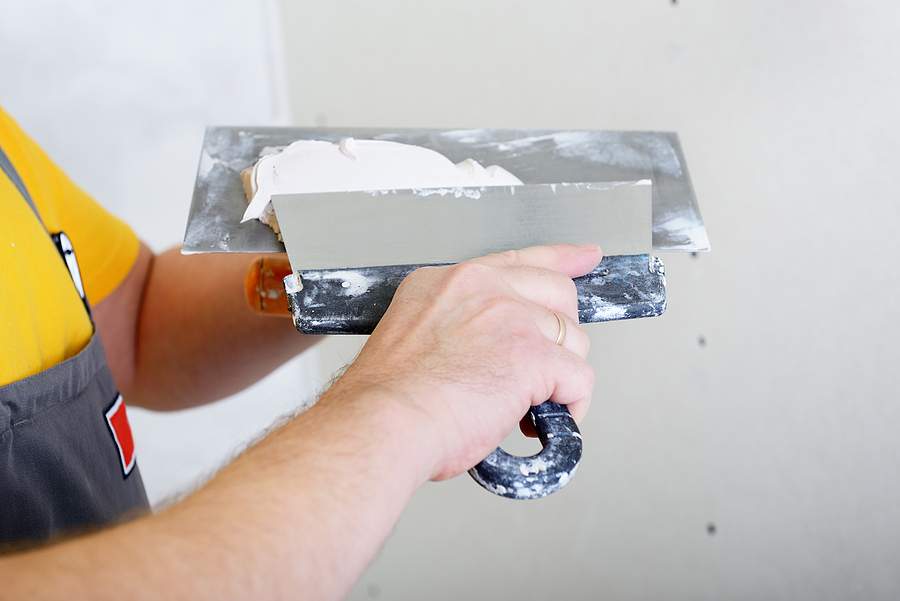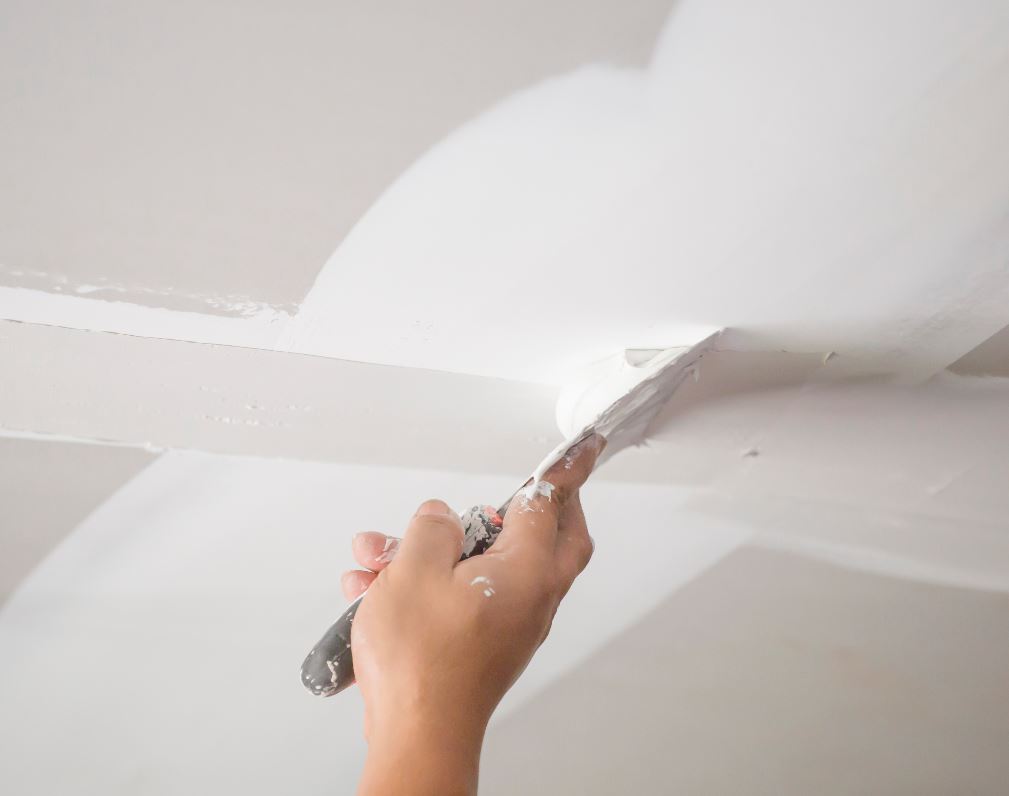Step-by-Step Approaches to Getting Flawless Drywall Repair and Installment
Achieving remarkable drywall repair and setup needs a systematic approach. It includes comprehending the various types of drywall and the devices necessary for the job. Appropriate area prep work is vital before starting any type of job. Interior Painting. Each action, from covering holes to installing new sheets, needs attention to detail. The process does not finish with setup; completing methods are important for a polished look. The next actions will assure a smooth result, but just what do they entail?
Understanding Drywall Types and Tools Needed

The setup devices are similarly crucial. An utility blade is vital for cutting drywall sheets, while a drywall saw can help in making accurate cuts for electrical outlets or fixtures. T-squares assure accurate dimensions, and drywall screws or nails protect the panels to wall studs. In addition, a drywall lift can facilitate the installation of large sheets, minimizing physical strain. Familiarity with these devices and types significantly adds to the effectiveness and high quality of drywall jobs.
Preparing the Area for Fixing or Installation
Preparing the area for drywall repair or installation is vital to assure a smooth and efficient procedure. The surrounding room must be cleared of furniture and other obstacles to provide sufficient working room. This not only guarantees safety however also avoids damage to items. Next off, it is important to cover the flooring with ground cloth to capture any particles or dirt produced throughout the job.
Additionally, the wall surfaces must be examined for any loosened paint or wallpaper that may hinder adhesion. Eliminating these elements produces a tidy surface for the new drywall. Prior to beginning, it is advisable to switch off power to electric outlets or fixtures in the vicinity. Ensuring appropriate lighting in the workspace will certainly even more boost presence and focus throughout the repair service or installation procedure. drywall contractor. By diligently preparing the area, one lays the foundation for an effective drywall project
Step-by-Step Process for Patching Holes

Patching openings in drywall calls for a systematic method to assure a seamless repair work. The initial step includes assessing the size of the hole. For small holes, a patching compound may be sufficient, while larger holes necessitate a patch. Next, the damaged location needs to be cleaned up and prepared by removing any kind of loose debris.
For small holes, using spackling substance with a putty blade is suggested, smoothing it over the hole and feathering the edges. Once dry, sanding the area ensures a smooth surface. For bigger openings, a drywall spot need to be cut to size, placed over the hole, and safeguarded with screws. After installing the patch, the same spackling procedure is repeated, complied with by fining sand.
The patched area must be primed and repainted to match the surrounding wall. This precise procedure guarantees a specialist look and expands the lifespan of the fixing.
Setting Up New Drywall Sheets: A Comprehensive Overview
Mounting new drywall sheets requires mindful planning and implementation to guarantee a visually attractive and durable finish. First, the location must be determined properly to identify the number of sheets needed. It is crucial to choose the appropriate thickness, usually 1/2-inch for indoor walls and 5/8-inch for ceilings or fire-rated applications.
Next off, the studs or framework ought to be checked for any irregularities, ensuring they are aligned and correctly spaced. When positioning the drywall sheets, they should be positioned horizontally to lessen joints and boost structural honesty. get more info A drywall lift can be valuable for overhanging setups.
Securing the sheets with drywall screws at suitable intervals makes certain a secure installment. It is necessary to countersink the screws a little listed below the surface to get ready for the finishing procedure. Adhering to these standards will certainly cause a strong foundation, all set for the following actions in drywall completing.
Completing Touches: Insulation, Mudding, and Fining Sand Methods
Once the drywall sheets are firmly secured, the focus changes to the finishing touches that will certainly supply a polished appearance. This process starts with taping, making use of either paper or fiberglass harmonize tape to cover the joints in between sheets. The tape ensures a smooth shift, decreasing the risk of cracking. Following insulation, mudding is essential; a joint substance is applied over the tape to fill up gaps and create a smooth surface area. Commonly, multiple layers are required, every one feathered out better than the previous to decrease visibility.
After enough drying time, fining sand is the final action in achieving a remarkable finish. A fine-grit sandpaper is utilized to smooth the dried substance, assuring there are no bumps or flaws. Focus to information during this stage is considerable, as it considerably affects the total look of the wall. Completion result should be an also, professional-looking surface prepared for priming and paint.
Frequently Asked Concerns
Just how Do I Choose the Right Drywall Thickness for My Job?
To pick the best drywall density, consider the job's function, area, and structural demands. Criterion thicknesses consist of 1/2-inch for basic use and 5/8-inch for fire-rated applications, making sure toughness and compliance with building codes.

Can I Install Drywall Over Existing Drywall?
Yes, mounting drywall over existing drywall is feasible. It is crucial to ensure the underlying surface is secure and complimentary from damages. Proper attachment and consideration of density are necessary for a successful installment.
What Are the most effective Practices for Drywall Disposal?
The most effective methods for drywall disposal include recycling when feasible, using regional waste administration solutions, and following standards for unsafe materials if suitable. Drywall Repair Ogden UT. Properly identifying and sealing waste warranties compliance and security during disposal
The length of time Should I Wait for Mud to Dry Before Sanding?
Generally, one should wait 24 hr for drywall mud to dry prior to sanding. Drying time can differ based on humidity and temperature, so inspecting for a company appearance is advisable before proceeding.
Are There Eco-Friendly Drywall Options Available?
Yes, green drywall options are available. These options commonly make use of recycled materials, low-VOC adhesives, and sustainable production methods, decreasing environmental influence while offering reliable insulation and toughness for various building and construction and remodelling tasks.
An utility blade is crucial for reducing drywall sheets, while a drywall saw can assist in making exact cuts for outlets or fixtures. Preparing the area for drywall repair or installation is vital to guarantee a smooth and efficient procedure. Covering openings in drywall needs a methodical method to guarantee a seamless repair. Installing brand-new drywall sheets calls for cautious planning and execution to guarantee a aesthetically appealing and sturdy finish. Yes, mounting drywall over existing drywall is feasible.